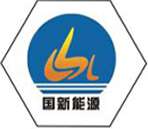
Aug . 14, 2024 16:26
Back to list
Understanding the Importance and Functionality of Pressure Reducing Devices in Various Applications
Understanding Pressure Reducers The Essential Component in Fluid Systems
Pressure reducers are crucial devices utilized in various industries and applications to manage and control fluid pressure. By efficiently reducing and regulating pressure from an elevated level to a more manageable range, these components ensure the safe and efficient operation of systems that involve gas, liquids, and steam. This article will explore the significance of pressure reducers, their functionality, types, and applications.
What is a Pressure Reducer?
At its core, a pressure reducer, also known as a pressure regulator, is a mechanical device designed to reduce the pressure of a gas or liquid to a specified level. It operates by allowing a high-pressure input from a source, such as a compressed gas cylinder or water supply line, to pass through the device, which then lowers and stabilizes the pressure before delivering it to the downstream system. This regulation is necessary because many systems can only operate effectively or safely within a certain pressure range.
How Does It Work?
The functionality of a pressure reducer hinges on its design, which typically includes a spring-loaded diaphragm and an outlet pressure adjustment mechanism. When the high-pressure fluid enters the reducer, it pushes against the diaphragm, which is connected to a spring. The spring compresses based on the force exerted by the incoming pressure. As the pressure in the downstream system begins to rise to the desired level, the diaphragm moves, opening a vent that allows excess pressure to escape. This continuous adjustment maintains the output pressure within a specific range.
Types of Pressure Reducers
Pressure reducers come in various forms, each designed for specific applications and requirements. The most common types include
1. Single-Stage Pressure Reducers These devices convert high pressure to low pressure in a single step. They are simple and cost-effective but are best suited for applications where the supply pressure is consistently high and the demand is relatively stable.
pressure reducer

2. Two-Stage Pressure Reducers These regulators offer a more stable output pressure by utilizing two separate reduction stages. They are particularly beneficial in situations where high fluctuations in input pressure are expected, such as in industrial settings or gas distribution systems.
3. Back Pressure Regulators These work by maintaining a set pressure in the upstream system, allowing for better control of flow rates, especially in processes where exact conditions are crucial.
Applications of Pressure Reducers
The applications of pressure reducers span various sectors, including
- Medical and Healthcare In medical gas systems, pressure reducers are vital for supplying gases like oxygen and nitrous oxide at safe pressures for patient use. - Industrial Manufacturing Many manufacturing processes rely on controlled fluid dynamics, where pressure reducers help maintain specific conditions for machinery and equipment operation.
- Plumbing and Water Supply In residential and commercial plumbing, these devices regulate water pressure to prevent damage to pipes and fixtures, ensuring a steady flow.
- HVAC Systems Pressure reducers are essential in heating and cooling applications, allowing for efficient operation of heating systems and air conditioners by regulating refrigerant flow and pressure.
Conclusion
Pressure reducers are indispensable components in a wide array of systems where fluid pressure regulation is necessary. Their ability to safely lower pressures ensures the protection and efficiency of both equipment and processes. As industries continue to evolve and demand greater precision and safety, the design and application of pressure reducers will likely advance, overshadowing their vital roles in modern engineering and technology. Understanding their operation and significance not only enhances our appreciation for these devices but also emphasizes their importance in our daily lives.
Latest news
-
Safety Valve Spring-Loaded Design Overpressure ProtectionNewsJul.25,2025
-
Precision Voltage Regulator AC5 Accuracy Grade PerformanceNewsJul.25,2025
-
Natural Gas Pressure Regulating Skid Industrial Pipeline ApplicationsNewsJul.25,2025
-
Natural Gas Filter Stainless Steel Mesh Element DesignNewsJul.25,2025
-
Gas Pressure Regulator Valve Direct-Acting Spring-Loaded DesignNewsJul.25,2025
-
Decompression Equipment Multi-Stage Heat Exchange System DesignNewsJul.25,2025

